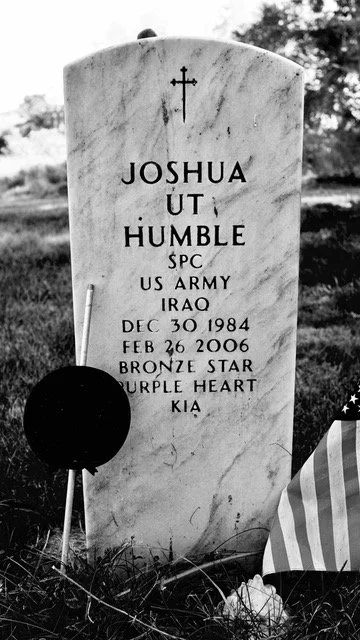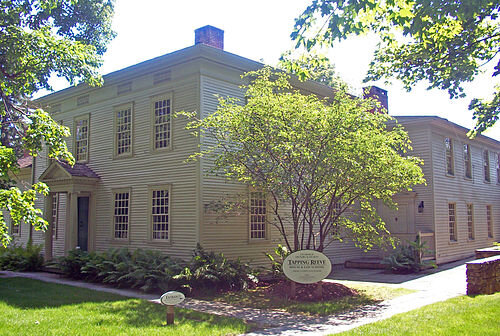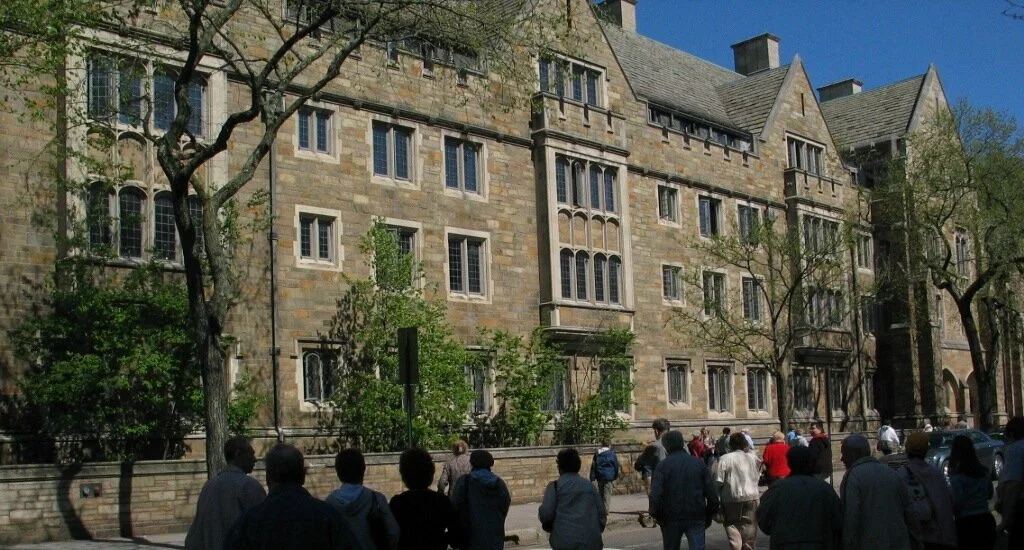
Woods on the grid
“The Woods Maine” (grid-based painting), by Rhode Island artist Kristin Lamb, at the Jennifer Terzian Gallery, Litchfield, Conn., April 27-June 15.
—Image courtesy of the gallery
The gallery promotes Ms. Lamb’s labor-intensive grid-based paintings {that} focus on the beauty of lush, green New England forests. Ms. Lamb says her work is a“blur between a focused photorealism, a computer-generated pattern and a fetishized repetition of an acrylic paint mark.’’
William Morgan: Paying homage to a young Maine hero
— Photo by William Morgan
Pine Grove Cemetery, in Appleton, Maine, is not easy to find. This rural community beyond the Camden Hills has a post office, a library and a fast-running stream where a mill once stood; the town office is open only three days a week. An elementary school serves the town, but middle and high- school students must travel by bus to Camden.
My wife and I drove down a road with an Abenaki name and across the Saint George River, up a steep hill to a ridge, in search of a barely marked turnoff. We bumped along a rutted dirt track to one of those ancient New England burying grounds with slate steles carved with primitive angels.
The grave we searched for was not under the elegiac oaks and dark conifers, but in the new part. This half of the cemetery has few trees, and the gravestones tend to be more elaborate, colored and polished. Many are adorned with plastic flowers, teddy bears and other tributes of contemporary mourning. The vertical marble slab we were visiting had not been tended in a while. Veterans of Vietnam and the Persian Gulf rest nearby.
On Feb. 26, 2006, Joshua Humble, a specialist in the famed winter warriors of the 10th Mountain Division, was killed near Baghdad by a roadside bomb – the 2,385th U.S. soldier to die in Iraq. Humble had just turned 21. A regimental honor guard stood by his coffin at a funeral home in Belfast, then followed the hearse to Appleton for burial.
Thousands of kids died in the Iraq War. What was so special about one from an agricultural community in Maine? Was he like so many soldiers: high school, limited local prospects and maybe a desire to get away from small-town life?
A newspaper obituary shows a face of aching innocence. His middle initial was intriguing: Did the “U.” stand for Ulysses, Uriah or maybe Uncas? His stone revealed that the U. was for Ut, an Asian anomaly in an all-white Appleton.
Josh Humble is remembered primarily through an ongoing memorial on Legacy.com. There have been 47 comments since Humble’s death, most from buddies in arms who speak of his heroism. Five years ago, Julie Lee, from the Maine town of Washington, recalled Josh as “a respectful kid with a fun sense of humor.” She added, “Your sacrifice for our country will not be forgotten.”
Yet recent war deaths such as Humble’s have been forgotten – only an average of three notes a year on an obituary, and memorial Web site is not much of a remembrance. These are the young men and women of a volunteer military who carried the load while the rest of us did not face roadside bombs in the desert.
I was drafted in 1966 but was determined not to be sent to Vietnam. After passing my Army physical, I implored an orthopedic surgeon – my college roommate’s father – to write a letter outlining how a skiing injury would make me unfit for basic training. Contemporaries who did not have such connections went to Southeast Asia, and of course some died there. Maybe unforgetting one Maine soldier would offset the shadow of my not having donned a uniform.
Since reading of Josh Humble’s death 15 years ago, we had talked of paying our respects at his final resting place. It was a bucolic, almost secret, graveyard on a perfect autumn day. I was glad we went. But as I placed a stone on Josh’s marker, I did not feel peace or closure. Instead, I was overcome by a rage that took me back to the protests of my youth. For me, Joshua Humble symbolizes the tragedy of nonsensical wars that robbed hundreds of places like Appleton of their young people and their future.
William Morgan is an architectural writer and a resident of Providence who has taught at Princeton University, the University of Louisville and Brown University, among other institutions. He went to camp in Litchfield, Maine, in the 1950s.
Camden, Maine, near Appleton, viewed from the summit of Mt. Battie, one of the Camden Hills.
— Photo by Dudesleeper
Praise for New England from John C. Calhoun
John C. Calhoun
“What people can excel our Northern and New England brethren in skill, invention, activity, perseverance and enterprise?’’
— John C. Calhoun (1792-1850). The South Carolinian served as vice president, secretary of state, secretary of war, congressman and senator. He was a brilliant, vociferous and poisonous defender of slavery and “states’ rights’’.
It surprises some that he attended Yale, where he graduated as valedictorian, and studied law at America’s first independent law school, Tapping Reeve Law School, in Litchfield, Conn., now a rich weekend place for New Yorkers.
One of Yale’s “colleges’’ (dorms) had been named Calhoun College but in 2017 was renamed in honor of Grace Murray Hopper, a pioneering computer scientist who also served as a Navy rear admiral.
Yale President Peter Salovey said then:
“The decision to change a college’s name is not one we take lightly, but John C. Calhoun’s legacy as a white supremacist and a national leader who passionately promoted slavery as a ‘positive good’ fundamentally conflicts with Yale’s mission and values.’’
The site of the former Tapping Reeve Law School (1784-1833), in Litchfield, Conn.
Hopper, formerly Calhoun, College (dorm) at Yale
John H. Field: An eight-point program for reviving Conn. economy
LITCHFIELD, Conn.
“How did rich Connecticut morph into one of America’s worst-performing economies?” Forbes Magazine asked in its August 2013 edition. Connecticut has become a bottom-quartile state by almost every measure of economic performance with contraction in its economy in 2011 and again in 2012, higher unemployment than the national average, and being last in the nation to reach “Tax Freedom Day,” which was May 13 this year.
How did this happen?
Jim Powell of Forbes asserted: “During the past two decades, some 300,000 more Connecticut residents have moved out of the state than have moved in … because investors, entrepreneurs, and other productive people want to go where they are welcome … and not exploited.”
Connecticut’s current administration and legislature have continued the downward trajectory of the state’s economy with more debt-funded growth of spending, the largest increases in taxes, and a continued hostile attitude toward businesses.
We must stop doing what isn’t working.
Connecticut has an opportunity in 2014 to make changes in management of its state government that are necessary to reverse its direction. This can be done as other states have demonstrated. Needed most are the will and courage of Connecticut’s elected leaders to make the necessary changes.
For voters, the need is for a broader interest in the state’s future than in whether the state is run by one political party or the other.
The following platform principles could provide the foundation of a new compact with the people. This is a call to action to both incumbents and their prospective replacements:
1. Install professional fiscal management disciplines. Clarify the state Constitution’s mandate for a balanced budget. Establish Generally Accepted Accounting Principles accounting with external audits, comprehensive budgeting, spending control systems, and biannual, zero-based planning of all programs and budgets.
2. Reform the state tax code to orient it toward economic growth.
3. Review and reform the regulatory environment to balance being “business friendly” while protecting the health, safety and personal freedoms of individuals.
4. Enact pro-choice labor laws that enable employees to choose a union to represent their interests to employers yet protect employees’ freedom to choose not to be dues-paying union members.
5. Change funding of public-employee benefit plans from guaranteed benefits to contributions at levels consistent with practices in private businesses. Encourage individually owned, portable employee savings plans for pension and medical planning.
6. Reform public education, strengthening parental and local school district control of curriculums, hiring, and compensation. State government should let public funds be used by parents to choose their children’s schools.
7. Reconsider the state’s role under the federal Affordable Health Care Act to control Medicaid costs and services, to maintain individual choice of insurance coverage options, and to protect provider-patient relationships.
8. Sustain state laws and regulations for environmental protection. Continue current Department of Energy and Environmental Protection strategies while building a reliable and low-cost energy infrastructure that supports competitiveness of commercial consumers and needs of individuals.
Note the absence in this list of religion, abortion, contraception, women’s rights, gun control, racial issues, sexual preference, immigration, foreign affairs, and sovereignty. These are important, complicated, and long-term national issues, but in Connecticut this year the focus must be to improve management of the state’s economy, business climate, and public education. Get these right and economic and employment growth will follow.
John H. Field (Litchfield.jfield150@gmail.com) is a retired senior executive of Union Carbide Corp. and a former member of the Board of Finance in Washington, Conn., who now lives in Litchfield.






